Best winter flowering shrubs: 11 picks for seasonal blooms
Bring the hardiest and best winter flowering shrubs into your garden and you'll be rewarded with pretty blooms and scent
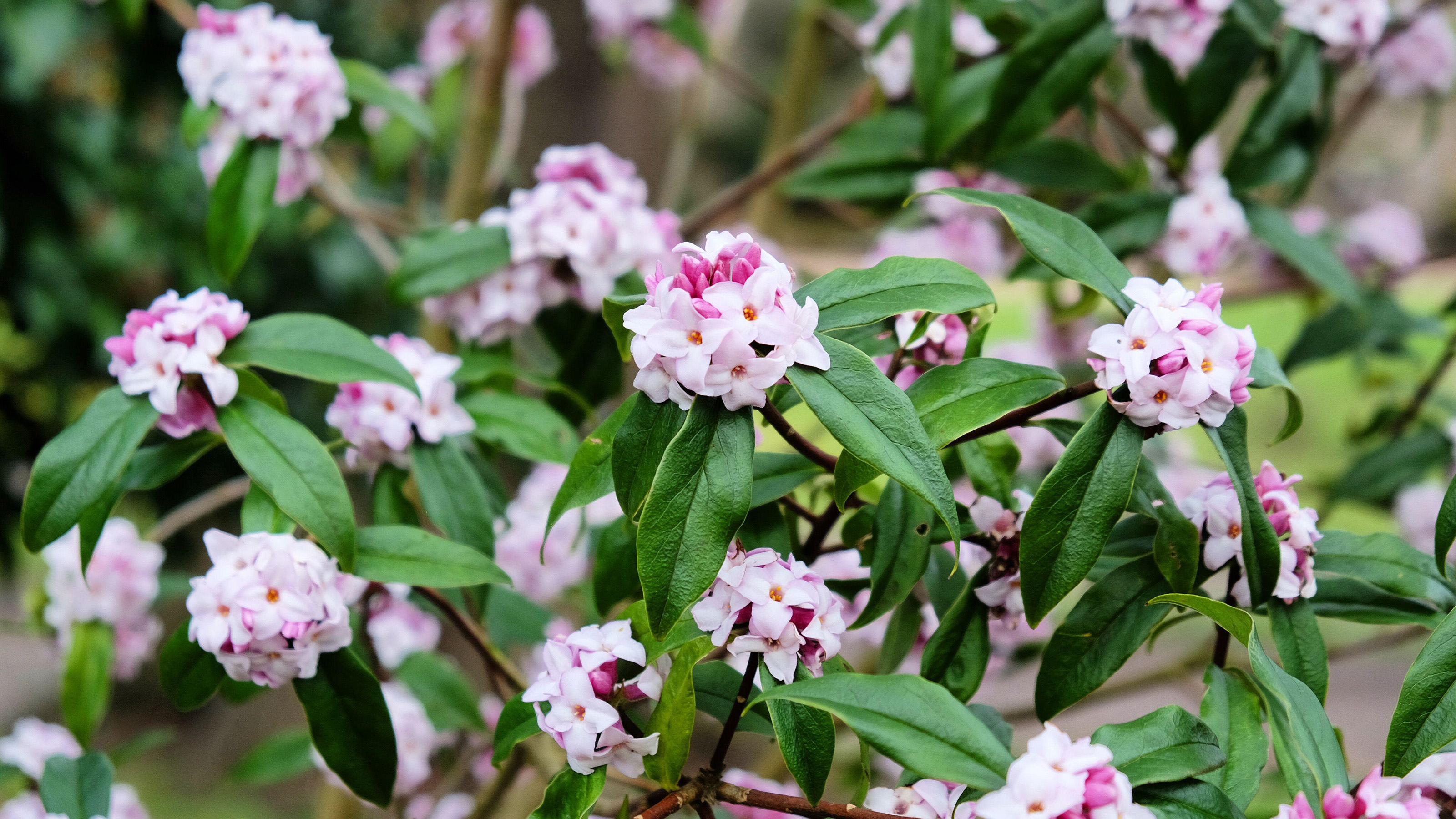

The best winter flowering shrubs can bring color, structure and scent to the garden. After the big, bold blooms of the summer have well and truly faded and before spring bulbs start to emerge.
In the colder winter months, the sight of anything in bloom in the garden is welcome. And adding new shrubs is not only a great way to boost your winter garden ideas, but they will continue to give structure and interest to your border throughout the year too.
Amateur Gardening expert Hazel Silver says: 'The likes of winter honeysuckle and viburnum exude an intense fragrance that carries on the air. But while these deliciously scented winter flowerers are undoubtedly wonderful for winter color, many of them are also enormous, and enjoying them can seem unfeasible in the small garden.'
With some careful consideration, however, it's easy to find the right winter flowering shrubs to suit the size of your plot.
Brighten up your plot with the best winter flowering shrubs
Shrubs make some of the best plants for winter color for your garden. But make sure you choose the right shrub in order for it to thrive. Think about the size of the plot, the soil type and the light conditions when making your selection from the best winter flowering shrubs.
1. Winter honeysuckle (lonicera)
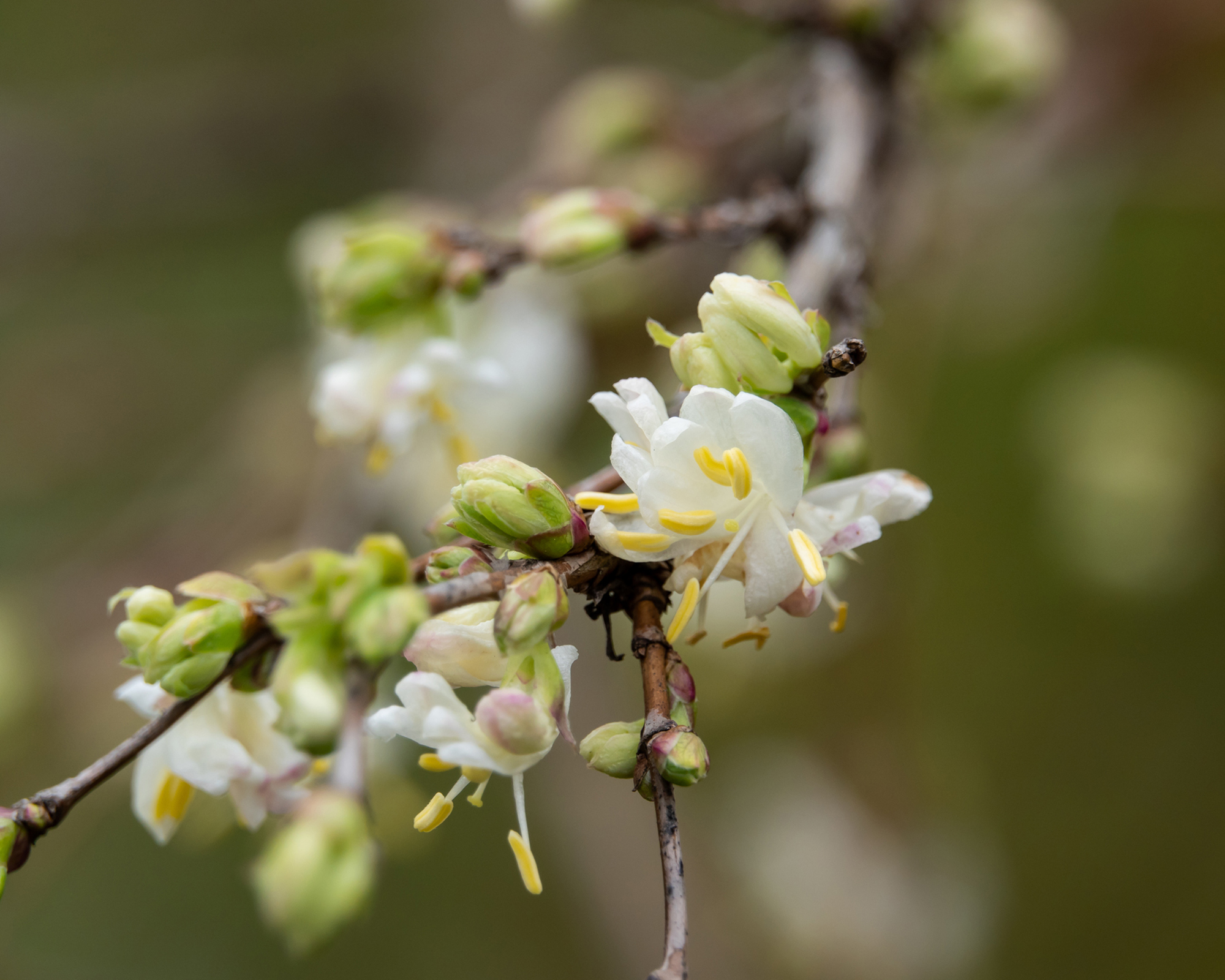
Scent is a big feature of the shrubby honeysuckles, the bushy deciduous types whose winter fragrance is sadly undervalued. In winter, pairs of small creamy flowers line the branches. But later in the year, they're fairly dull. However, mature specimens make fine climbing plant support ideas for small flowered summer clematis, climbing dicentras or canary creeper.
Loniceras are happy in any reasonable soil that is not parched or waterlogged. Climbing types tend to be vigorous, growing up to 6.5ft (2m) in height. They need plenty of space, plus stout support for their twining branches. The roots of climbing types can be in the shade, but the plants usually flower best with the top growth in the sun or, at least, without overhead shade. Shrubby types prefer full sun. They also benefit from generous soil preparation and regular feeding
Lonicera x purpusii ‘Winter Beauty’ is one of the best winter flowering shrubs, featuring intensely fragrant creamy flowers that open from early December and then keep coming until April. Unlike other varieties, it flowers well even on young plants. If you're short on space, you could try training them against cool north or east-facing walls.
Deciduous shrubby fragrant types like 'Winter Beauty' are best pruned immediately after flowering. Cut back the shoots that have flowered to within 2-4in (5-10cm) of the older wood.
2. Viburnum

During the winter months, this hardy shrub bursts into life producing masses of richly perfumed blooms on bare, woody stems. The bold pink flowers fade gradually to white before giving way to small, rounded, purple berries in summer. By fall, the green foliage transforms to a cloak of orange and yellow.
The shrub itself is very hardy and will reach a good 10ft (3m) high and wide and will survive in US Hardiness Zones 2-9, depending on the specific variety. It's important to know your soil type as viburnums like a deep, rich and moist soil that drains well. Unfussy as to alkaline or acidic, they also do well in clay soil. It makes sense to site fragrant plants like viburnum in areas that are sunny but sheltered from wind, where the scent can linger and build. Even better if they're beside a door or a pathway.
A lovely type of viburnum is V. farreri ‘Candidissimum' – it has white rather than pale pink and leaves are a festive, pale green in spring. Heavily scented flowers appear for up to eight weeks in winter. Fruits are pale yellow. Whilst V. x bodnantense ‘Deben’ has pink buds decorate the branches but open to white flowers with just a hint of pink. Flowers are produced for a long period.
3. Hamamelis
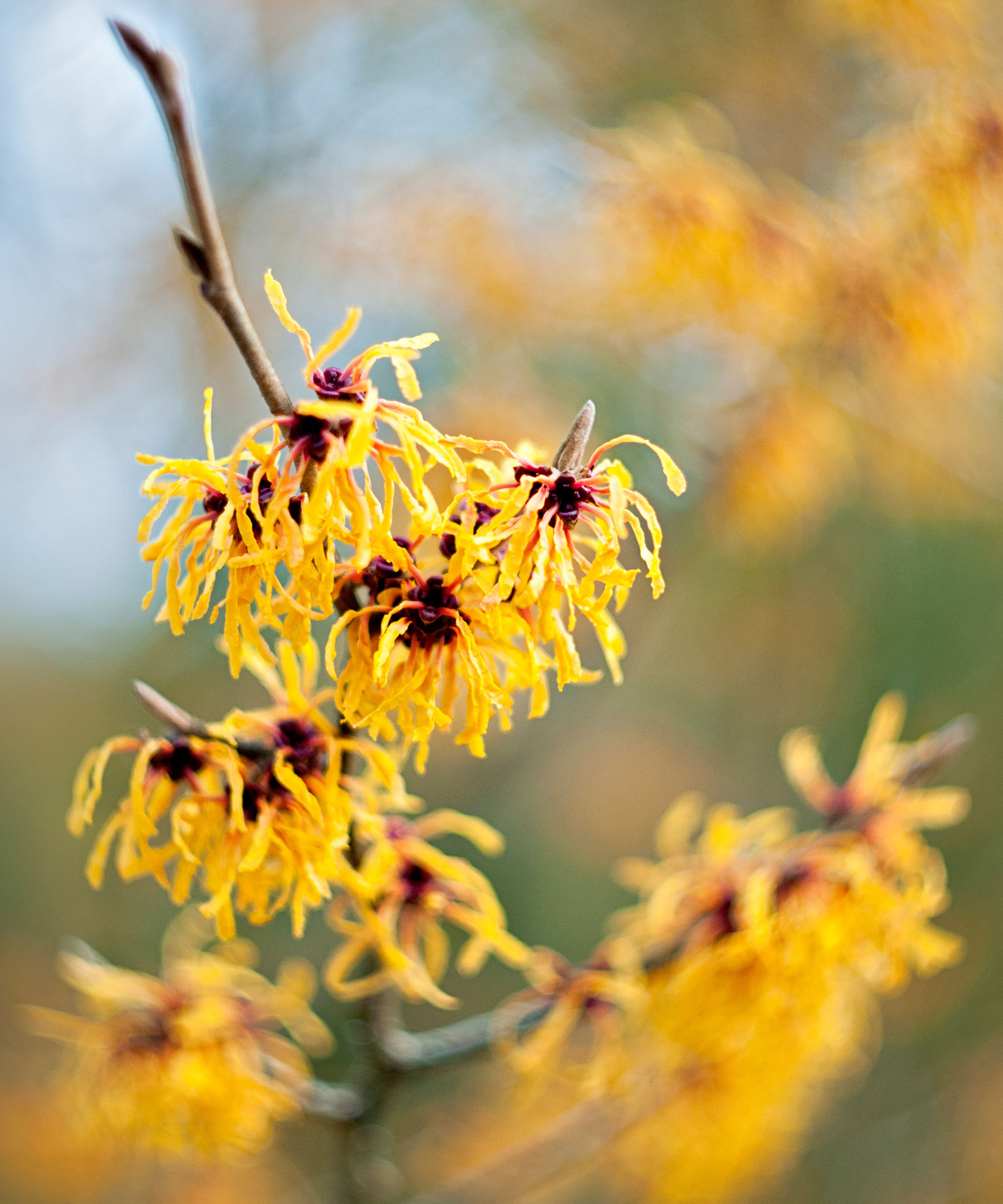
These large winter flowering shrubs or small trees with flowers in red, orange and yellow are probably better known to many by their common name witch hazel.
Their spider-like flowers can be easily seen when they appear in mid-winter as this is a deciduous plant and the flowers appear whilst the stems are bare. The flowers themselves produce delicate fragrance which seems best on sunny days. They will survive in US Hardiness Zones 3 - 9.
Hamamelis x intermedia ‘Pallida’ has bright yellow and highly fragrant flowers, whereas Hamamelis x intermedia ‘Diane’ has scented red flowers. As the red flowers are quite dark, it can be useful to plant cultivars such as ‘Diane’ in front of an evergreen shrub so that the red flowers show up against the green backdrop.
Hamamelis varieties can grow up to 13ft (4m) in height, which will be too tall for most smaller gardens. So opt for Hamamelis vernalis ‘Quasimodo’ which is one of the best trees for small gardens. It's a dense, compact, slow-growing shrub that is ablaze with saffron-yellow spidery flowers from January to March. Plant in extremely well-drained, fertile soil, in sun or dappled shade. Its eventual height is 4ft (1m).
4. Acacia (wattle)

Wreathed with tiny pompoms of fuzzy, fragrant yellow blossom, Acacia dealbata, the florist’s mimosa or silver wattle, will light up a garden in February or March. These trees with evergreen, fernlike foliage are usually in bloom for Valentine’s Day in the UK.
Their nectar is a welcome energy source for bees coming out of hibernation. Although silver wattle is not reliably hardy in all parts of the UK or the US (Zones 9 - 11) it will withstand temperatures down to around 19°F (-7°C) and is more frost-proof on a light soil than on a heavy one.
Amateur Gardening expert Anne Swithinbank says: 'The secret weapon of this Australian native is speed of growth. Capable of putting on several feet a year, a plant will grow rapidly into a small tree of around 30ft (9m), although in the wild it will easily double that.'
In colder regions, you'll need to know how to protect plants from frost. Grow your silver wattle in a pot to put under cover for winter. Potted on to a slightly larger container after flowering every year, they’ll stay healthy. Once a maximum pot size is reached, rely on top dressing or root pruning to enrich the compost and allow new roots to grow.
Anne says: 'I’d use a 50:50 mix of John Innes No2 and a soilless multipurpose potting compost. Water well and, once established, add a balanced liquid feed fortnightly until the end of July before letting the plant toughen up for winter.
Make sure plants don’t go dry in autumn when flower buds are setting. And should pruning shrubs be necessary, do it after the plant is through flowering.
5. Oregan Grape (Mahonia)
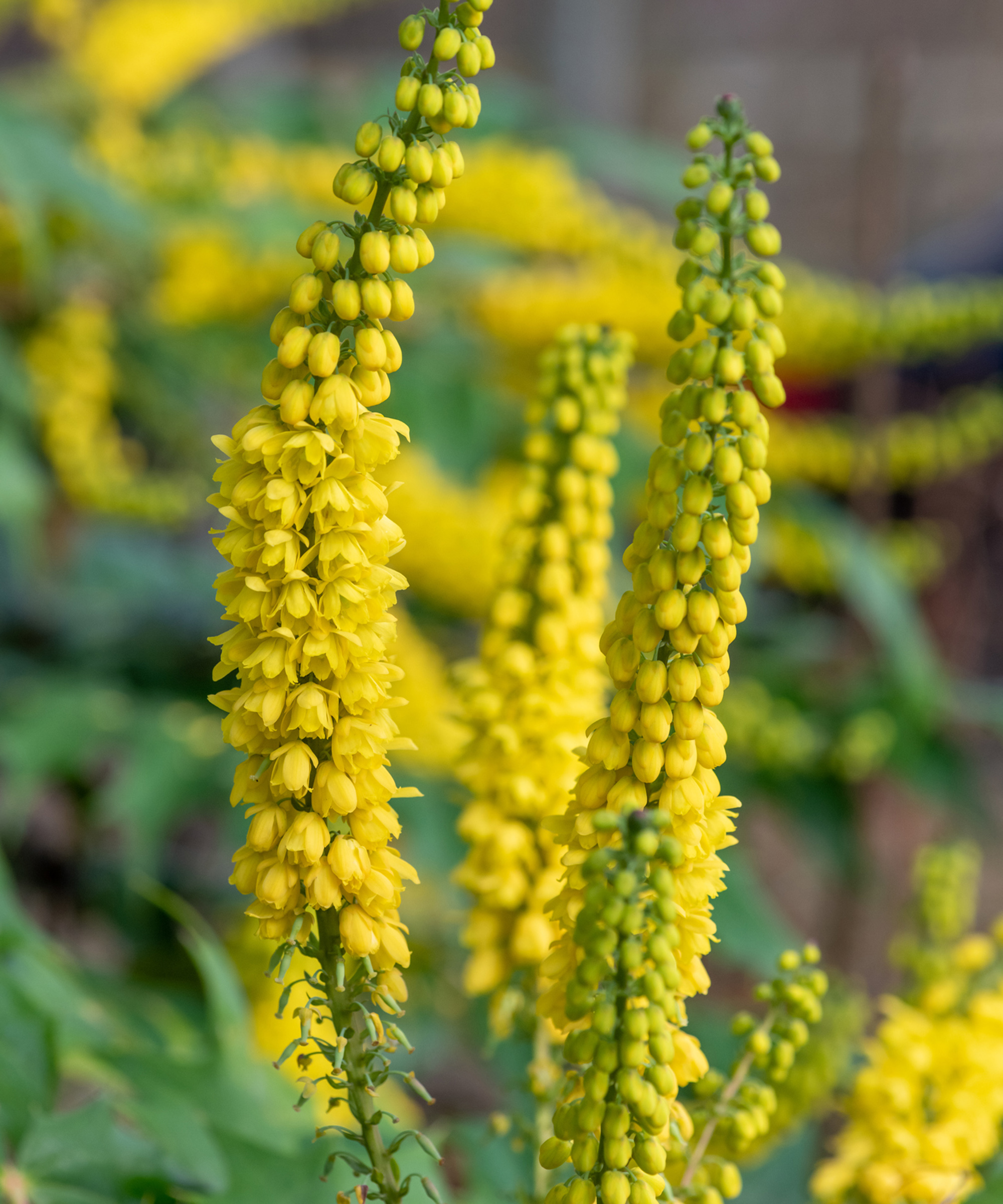
Prized for their ability to add much-needed color and interest, many winter flowers come with an added bonus of knockout fragrance. The Oregan Grape (mahonia) is no exception and will be a real treat for the nose as well as the eyes. As well as being one of the best winter flowering shrubs it's also a great architectural plant for winter gardens.
Theirs is a scent which will stop you in your tracks as you walk past it. And with glossy evergreen leaves crowned in yellow flowers they create great visual interest in the winter garden. As well as flowering when very little else is in bloom, in fall and winter you'll see its leaves take on reddish hues. And it will produce berries that will attract wildlife.
The mahonia is a shade loving plant and it's hardy to frost. Best in US Hardiness Zones 5 - 9. Despite being one of the most useful plants for shade, mahonias will grow in sun – the crucial thing is to ensure the ground is moist. Don’t plant in a windy site, otherwise the leaves may bruise.
Their spiky foliage can scratch, so don’t position your mahonia beside a path, and be careful when weeding close by. Plants don’t require much attention: an occasional mulch will suffice. They can suffer rust and powdery mildew, but this is rare.
If you’ve got a small garden, you’ll need to prune your mahonia. They are fairly slow growers, but after a few years will begin to expand. Cut back in spring once flowering has finished.
6. Daphne

Daphnes are one of the best scented shrubs available, and they're easy to grow. 'Evergreen or deciduous, daphnes are generally neat and well-behaved,' says Amateur Gardening expert Graham Rice says. 'Some will reach 6.5ft (2m), while many will grow to less than half that and thrive in containers. Alternatively, you can use the smaller sun-loving varieties as evergreen anchors in raised beds, among alpine plants and dwarf bulbs.'
You can plant daphnes at any time in spring or fall. Check individual soil and site preferences, but most are best in an elusive combination of a well-drained soil that retains moisture. No daphne enjoys waterlogging.
Many appreciate full sun – in a raised garden bed, for example. Though some varieties will thrive in dappled shade. They are suitable for growing in winter planters as long as you use a deep pot, filled with a soil-based compost such as John Innes No3.
Most daphnes never need pruning; some even resent it and may die back from the pruning cut. Grow in US Hardiness Zones 4 - 9.
7. Sarcococca
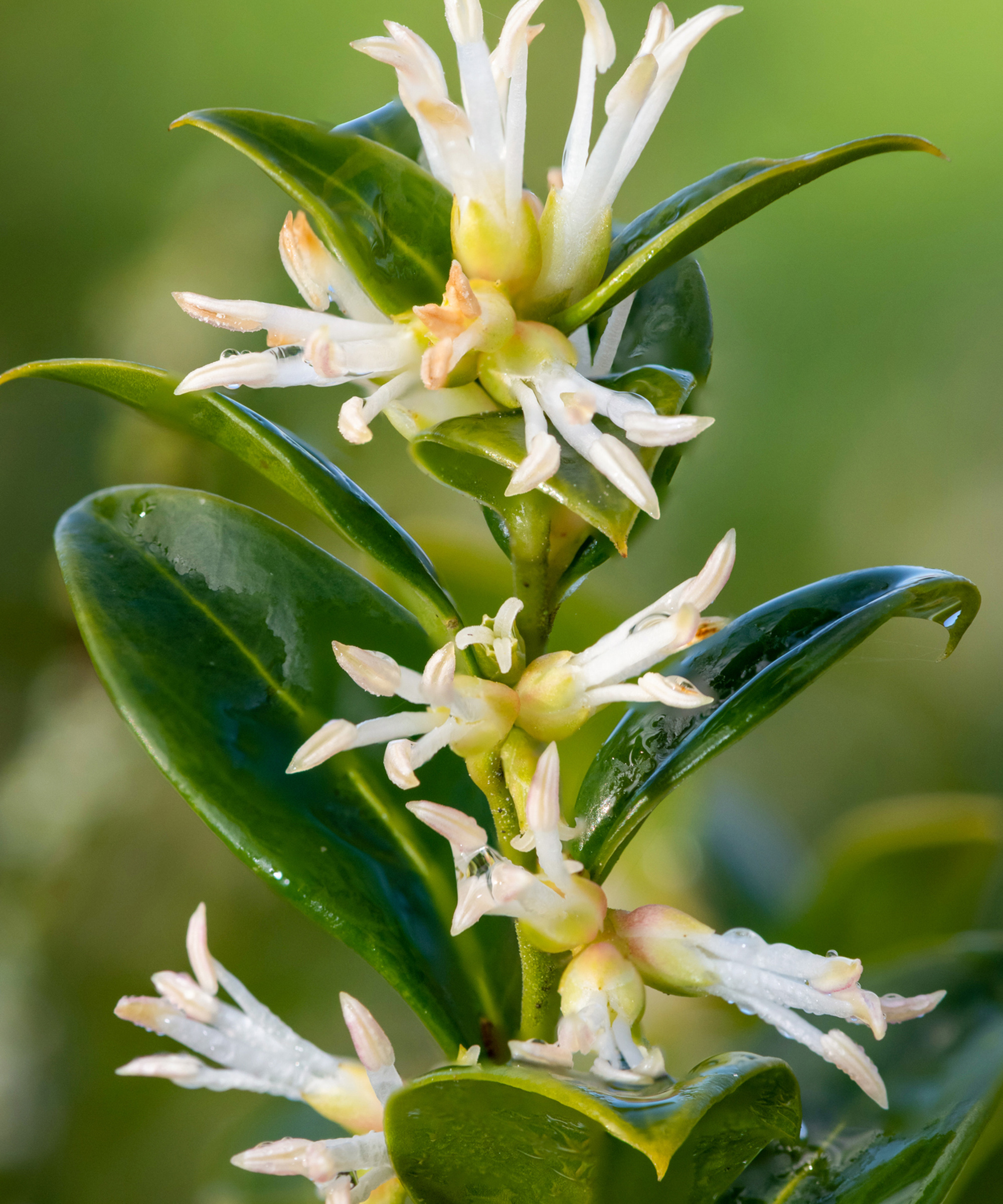
Sarcococca, or sweet box, is a compact evergreen shrub known for its tiny vanilla-scented flowers, which will perfume the whole garden in the midst of winter. It tolerates light shade. All species are hardy apart from S. saligna, which needs protection in a cold garden.
Sarcococcas are very easy to please and happy in all soil types – the structure can be loam, clay, chalky or sandy and the pH can be alkali, acidic or neutral. No regular pruning is needed apart from shortening frosted and dying shoots to live buds in late spring. After pruning comes mulching the base with some well rotted compost.
We love the variety ‘Purple Stem’ which has the advantage of purple-flushed stems, leaf stalks, which complement the reddish-white flowers. What’s more, it’s totally happy in shade.
8. Camellia

The sumptuous, colorful blooms of camellia appear when there is precious little else in flower, makes them one of the best winter flowering shrubs. These evergreen shrubs, with bright glossy green foliage, are bold and elegant and will produce an abundance of blooms.
But how to grow camellias? Well they need acid soil, with a pH of between 5.5 and 6. If your soil is borderline, add plenty of leaf mould to the planting hole, and a mulch of composted bark or pine needles. Or grow in pots using a soil-based ericaceous compost mix. Use rainwater for watering. Slow-growing, they do not need repotting often, and you won’t have to prune your camellia to promote flowering.
They prefer shade, but will suit most locations apart from east-facing, as early morning sun can harm the flowers. And they need acid soil to grow happily in the ground, although most will perform just as well in pots.
Being upright shrubs they can be grown in a wide range of situations - against walls, as hedges, freestanding on their own or in groups, or with other shade-loving, woodland plants.
There are thousands of different colors and types of camellia to choose from. The earliest flowering varieties are mostly in the Sasanqua group, with blooms appearing from October onwards.
9. Winter jasmine

Jasmine is essentially known for its perfume, but this fascinating group of plants has so much more to offer your winter landscaping ideas. The familiar white summer variety will bloom from May to October. But opting for the equally popular winter jasmine (Jasminum nudiflorum) you can have flowers from November to March.
It grows to around 10ft (3m) in height and spread. Its mid-yellow flowers are not overtly scented. Think about how to grow jasmine in your own garden. For example, it looks wonderful trained over a porch or allowed to ramble over a wall. Plant it in sun or semi-shade. As its flowering peak is towards the end of winter, in China it is called Yingchun, which means 'the flower that welcomes spring'.
Where to grow winter flowering shrubs
Think about the size of the space (or spaces) you're wanting to place a winter shrub and look at the eventual height and spread. Whilst some plants may fit the area perfectly when first planted, you might find that it quickly engulfs its surroundings once in the soil.
This could be avoided by growing your winter flowering shrub in a container. So you'll need to select the best winter plants for pots. 'Some winter-flowering shrubs can be grown against a wall, reducing the amount of room they need.' recommends Hazel. 'Consider growing something like a white forsythia against the sunny side of the house. Its bare branches are adorned with almond scented flowers in February and March. '
According to Hazel Silver you can further maximize space by growing a summer-flowering climber like Clematis ‘Comtesse de Bouchaud’ through a winter shrub. 'Lonicera x purpusii ‘Winter Beauty’, for example, produces perfumed white blooms from December to March, but does very little for the rest of the year, so why not use it as a scaffold for clematis?'

Teresa has worked as an Editor on a number of gardening magazines for three years now. So she is lucky enough to see and write about gardening across all sizes, budgets and abilities. She recently moved into her first home and the garden is a real project! Currently she is relishing planning her own design and planting schemes. What she is most passionate about when it comes to gardening are the positive effects it has on our mental health to grow and care for plants, as well as being great for the environment too and help provide food and shelter for wildlife.
